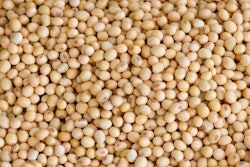Darling Ingredients Inc. reported revenue of $896.3 million for the second quarter of 2017, up 2.2 percent from $877.3 million for the second quarter of 2016.
Net income attributable to Darling for the three months ended July 1, 2017, was $9.1 million, or $0.05 per diluted share, compared with a net income of $32.0 million, or $0.19 per diluted share, for the second quarter of 2016. The decrease in net income for the second quarter 2017 is primarily due to weakness in the Food Ingredients segment, particularly the gelatin business, and the absence of the blenders tax credit, which was included in the second quarter 2016 but has not yet been reinstated for 2017.
“We are pleased with second quarter performance across most of the segments in light of a mixed global pricing environment and headwinds in South America,” said Randall C. Stuewe, chairman and CEO of Darling Ingredients Inc. “Sequentially, the Feed segment delivered a very nice performance while the Food segment results were disappointing due to margin compression from rising raw material prices in our global gelatin business and ongoing macro-economic issues in Argentina.”
Feed Ingredients segment
Margins held and the Feed Ingredients segment performed well supported by solid global raw material volumes, especially in Europe. North American protein markets were mixed with strong pet food demand offset by lagging meat and bone meal pricing. Global fat markets remained firm with demand trending lower late in the quarter in concert with lower palm oil complex prices.
Feed Ingredients operating income for the three months ended July 1, 2017, was $39.0 million, a decrease of $2.4 million or 5.8 percent as compared with the three months ended July 2, 2016. Segment operating income was down in the three months ended July 1, 2017, as compared with the same period in fiscal 2016 due to higher depreciation from new plant locations that were not operating in the three months ended July 2, 2016.









